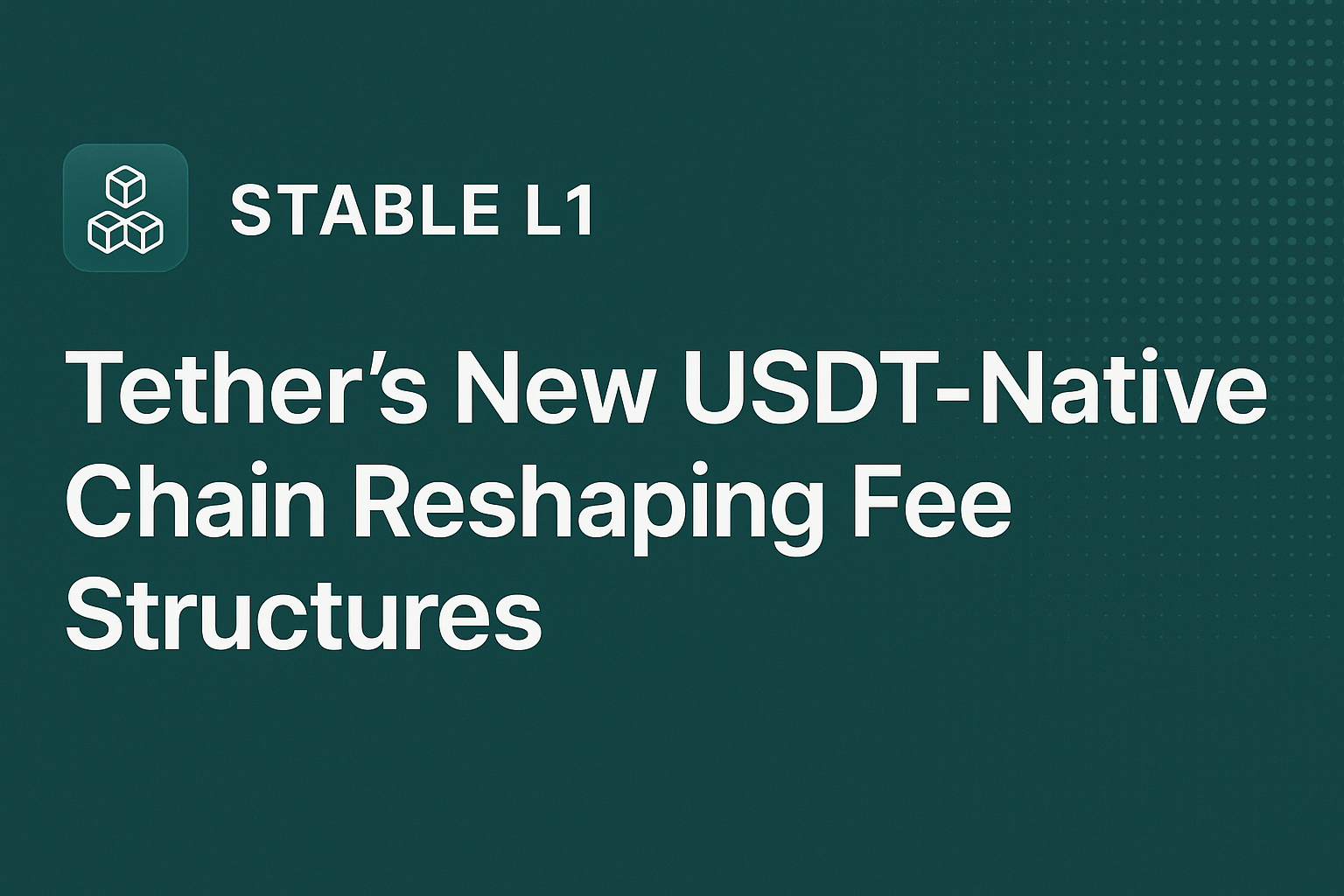STABLE L1: TETHER’S NEW USDT-NATIVE CHAIN RESHAPING FEE STRUCTURES

INTRODUCTION
In a bold and strategic move to redefine how value is transacted across blockchain networks, Tether has announced the launch of Stable L1
A USDT-native blockchain built from the ground up to simplify and stabilize on-chain fees. Designed specifically for stablecoin-centric applications, Stable L1 promises to eliminate many of the friction points that have traditionally plagued institutional and retail users alike starting with gas fees.
THE PROBLEM WITH VOLATILE NATIVE TOKEN
One of the significant challenges institutions face when engaging with blockchain technology is the volatility of native tokens.
These tokens, often required for transaction fees, can introduce unpredictability and risk into financial operations. Tether's new chain addresses this issue by allowing transactions to be paid in USDT, a stablecoin pegged to the US dollar.
GAS IN USDT: MOVING BEYOND VOLATILE NATIVE TOKENS
One of the defining features of Stable L1 is that Gas Fee are paid in USDT, eliminating the need to acquire and manage volatile native tokens like ETH, SOL, or BNB. For institutions, this is a game-changer.
Managing exposure to volatile assets for the sole purpose of paying transaction fees has long been an operational and financial nuisance. Stable L1 introduces a cleaner model where every interaction, whether it’s a simple token transfer or a smart contract execution, is priced and paid in the same stable currency that’s being transacted.
This approach significantly reduces the risk and complexity for enterprise players, including fintech platforms, trading desks, and payment processors. It also creates a more predictable and transparent environment for fee accounting — a critical need in compliance-heavy sectors.
ZERO-FEE P2P TRANSFERS: FRICTIONLESS STABLECOIN PAYMENTS
Stable L1 doesn’t stop at simplifying gas. In its testnet phase, the chain introduces zero-fee Peer-to-Peer (P2P) USDT transfers, setting a precedent for costless stablecoin mobility. This could unlock new use cases for USDT as a medium of exchange, particularly in regions where traditional banking infrastructure is weak or where cross-border remittances incur high fees.
The implications are significant. Tether, already the dominant stablecoin by market capitalization and usage, could see a dramatic uptick in transactional volume if it becomes the easiest and cheapest way to move digital dollars across borders — especially if such zero-fee capabilities carry into mainnet.
DEVELOPERS FIRST: SDK & COMPOSABILITY
To ensure robust adoption, Tether is also launching an SDK alongside the testnet, allowing developers to begin integrating Stable L1 functionality into wallets, payment systems, and dApps. With familiar tooling and seamless composability with existing Web3 infrastructure, the chain is positioning itself not just as a consumer-friendly network but also as a developer-first platform.
This strategic focus on ease-of-use and integration will be key in driving adoption. By providing a stable, simple, and cost-effective foundation for USDT transactions, Stable L1 may become the de facto base layer for stablecoin utility in a multichain world.
OUTLOOK: A STABLECOIN LAYER FOR A STABLE ECONOMY
With Stable L1, Tether is moving beyond its role as a token issuer and into the realm of blockchain infrastructure provider. This shift has the potential to change how the crypto economy thinks about stablecoins, not just as assets, but as transaction primitives.
As the blockchain industry grapples with gas volatility, Layer 2 complexities, and cross-chain fragmentation, Stable L1 offers a radically simple proposition: a stable chain for a stable coin.
If Tether can execute on its vision and maintain decentralization, security, and performance Stable L1 could become the preferred network for anyone seeking to use Stablecoin for everyday payments, remittances, and beyond.
CONCLUSION
Tether's USDT-native chain is a significant development in the cryptocurrency space, offering a stable, efficient, and innovative solution for transaction fees.
As the blockchain industry continues to evolve, this technology has the potential to drive greater adoption, improve user experience, and foster new use cases. With its promising features and implications, Tether's USDT-native chain is an exciting development to watch in the coming months and years.
REFERENCE LINK
https://university.mitosis.org/stablecoin/
Comments ()